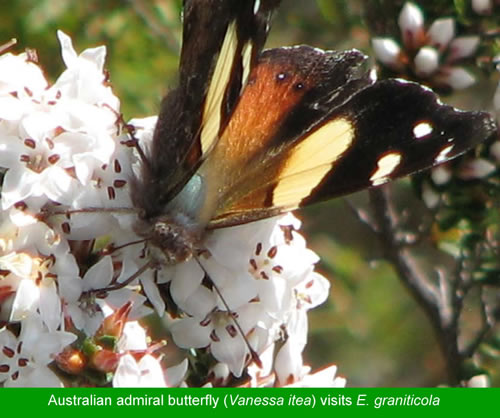Progress report on the grant
Karen Johnson and Peter McQuillan, University of Tasmania (329 KB)
December 2011
There is almost no information on the pollinators of Tasmania’s threatened Epacris species. Thus, the primary aim of our project is to determine the pollinators of Epacris species and explore the relationships between their pollinators, floral morphology, flowering time and habitat. Here, we report on our progress. In 2011, we established breeding systems experiments; made observations on the animal visitors to Epacris flowers; and collected data pertaining to morphology, flowering time and habitat.
Preliminary results indicate that the rare and endangered Epacris species are visited by a diversity of animal pollinators – particularly flies, native and introduced bees, and butterflies. To date, no Epacris species have been exclusively fly, bee, or butterfly pollinated. Flies appear to account for the greatest number of pollinating taxa, consistent with their high local diversity in Tasmania. Overall, different animal groups have been found to visit a range of Epacris plants suggesting a lack of pollinator specialisation.

